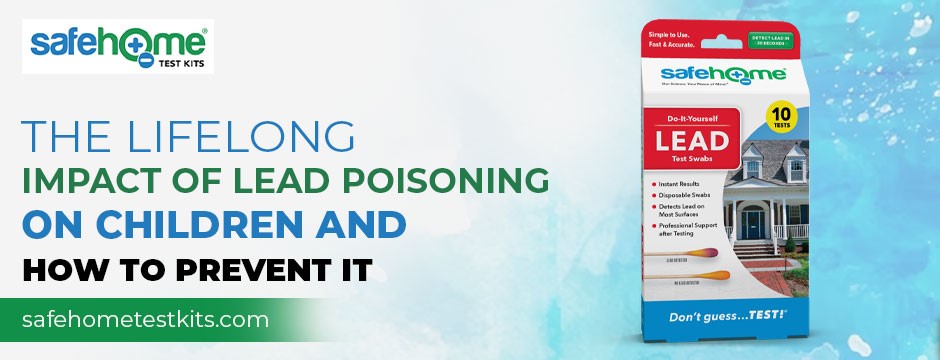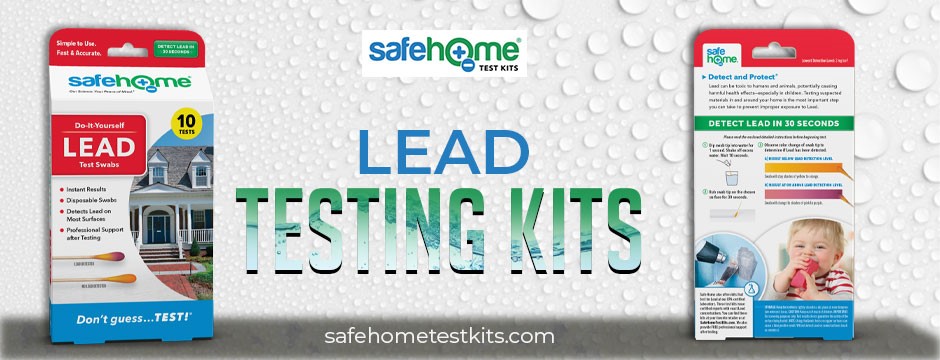The Lifelong Impact of Lead Poisoning on Children and How to Prevent It

In an increasingly modernized world, the hidden threat of lead poisoning continues to haunt the health and development of our most vulnerable population: children. Despite the remarkable advancements in healthcare and stringent safety regulations, the specter of Lead exposure lingers. This comprehensive guide aims to delve deeply into the enduring repercussions of Lead poisoning on children and to explore a range of effective strategies to thwart the devastating effects that it can have on young lives.
Understanding Lead Poisoning
Lead poisoning is a sinister condition that arises when the human body absorbs excessive amounts of lead, a highly toxic metal that lurks in various unsuspecting sources such as paint, dust, soil, and even certain consumer goods (including food and drinks). Of grave concern is the fact that children are particularly susceptible to its dangers. Their inquisitive nature, along with their habit of exploring the world by putting objects into their mouths, places them at heightened risk. The insidiousness of lead poisoning lies in its silent infiltration—often, it goes undetected until irreparable damage has been done.
Ingress into the body occurs mainly through ingestion and inhalation. Once absorbed, lead accumulates within bones and exerts a lasting influence on multiple organ systems. While lead poisoning can afflict individuals of all ages, it is children who bear the brunt of its impact due to their developing brains and bodies that are more prone to its toxic effects.
The Lifelong Impact on Children
- ➢ Neurological Effects:
The developing brain, still in the process of forming neural connections, is particularly vulnerable to lead’s neurotoxic effects. Astonishingly, even low levels of lead exposure can lead to severe cognitive impairments, lowered IQ scores, and various learning disabilities. The distressing part is that these repercussions often stretch far beyond childhood, casting a long shadow over academic and professional achievements throughout life.
- ➢ Behavioral and Emotional Consequences:
A rapidly growing body of research underscores a troubling link between lead exposure and a myriad of behavioral issues that plague childhood and adolescence. Children who have been exposed to lead are more likely to exhibit aggressive behavior, impulsivity, and difficulties with maintaining attention. Consequently, these challenges can spiral into struggles with forming healthy relationships and maintaining a balanced emotional state.
- ➢ Educational Challenges:
The adverse effects of lead poisoning are not confined solely to cognitive and behavioral aspects; it also extends its clutches to education. Lead-poisoned children often grapple with poor concentration, memory deficiencies, and a reduced attention span. This trifecta of impediments acts as a barrier to academic progress, entrenching disparities and perpetuating cycles of poverty that curtail future opportunities.
- ➢ Physical Health Consequences:
In addition to cognitive and behavioral setbacks, lead poisoning can trigger a host of physical health issues. From cardiovascular complications to kidney damage and even anemia, the gamut of potential outcomes underscores the necessity of adopting a holistic approach to prevention.
Preventing Lead Poisoning
- ➢ Home Environment:
Parents emerge as the front-line defenders in establishing a lead-safe haven for their children. Regularly cleaning surfaces to minimize the presence of lead dust, the habit of frequently washing hands and cleaning toys, and maintaining a diet rich in calcium and iron collectively contribute to reducing lead absorption.
- ➢ Lead-Safe Renovations:
Renovating homes, particularly those constructed before the era of Lead awareness, comes with inherent risks. Lead-based paint, often prevalent in older homes, can be inadvertently disturbed during renovations, releasing harmful lead dust into the air. To mitigate these risks, it is crucial to engage certified lead testing professionals who adhere to lead-safe practices, including proper containment and thorough cleaning.

- ➢ Nutrition and Diet:
Adequate nutrition is a potent weapon in the fight against lead absorption. Foods rich in calcium and iron not only promote overall health but also thwart the absorption of lead in the body. Encouraging a well-rounded, nutrient-rich diet can contribute significantly to the prevention of lead poisoning.
- ➢ Identifying Lead Hazards:
Recognizing potential sources of Lead contamination is pivotal in ensuring proactive prevention. Homes built before 1978 are likely to contain lead-based paint, and contaminated soil and imported goods can also be hidden culprits. Regular inspection and utilizing lead testing kits are key to identifying and addressing these hazards before they can inflict harm.
- ➢ Regular Screening:
An essential pillar of prevention is the routine screening of at-risk children. Healthcare providers should conduct lead screenings at the ages of one and two, particularly in areas with a history of lead exposure. Early detection enables timely intervention, minimizing the probability of long-term damage.

Government Initiatives and Regulations
Governmental regulations wield considerable influence in curbing lead exposure. Legal standards are pivotal in setting limits on the permissible lead content in consumer goods and advocating for lead-free living environments. Awareness campaigns, designed to educate the general populace about the dangers of lead exposure and the critical nature of preventive measures, further contribute to these efforts. Keeping oneself informed about these regulations empowers responsible consumer choices.
The Role of Healthcare Providers
Healthcare professionals shoulder a significant responsibility in preventing lead poisoning. Beyond diagnosing and treating cases, they play a proactive role in promoting lead screenings, educating parents about potential risks, and offering guidance on effective lead-safe practices. Early intervention and vigilant monitoring are vital components that can attenuate the impact of lead exposure, potentially enhancing the quality of life for affected children.
Advocacy and Community Efforts
Communities serve as bedrocks for preventing lead poisoning. Raising awareness through impactful educational campaigns arms parents with the knowledge necessary to identify lead hazards and take preventive measures. Establishing support systems for families grappling with the challenges of lead poisoning not only alleviates their burdens but also fosters a sense of unity in the collective battle against this pernicious threat.
Conclusion
The haunting specter of lead poisoning casts a long shadow over children’s lives, potentially compromising their cognitive, emotional, and physical development. The path toward eradicating this menace requires a coordinated effort. By comprehending the inherent risks, instilling preventive measures, advocating for policy changes, and fostering widespread community awareness, we can strive to ensure that every child grows up in an environment free from the clutches of Lead poisoning’s debilitating effects. Armed with knowledge and unwavering determination, let us embark on this collective journey, one that promises a brighter, healthier future for our children.
Want to find out more? Visit us at Safe Home®!


